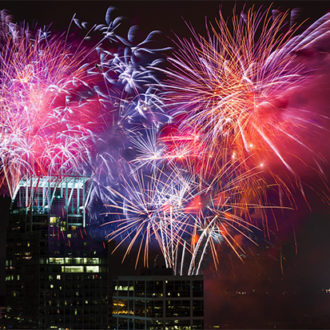K1 Challenge #4: The Animal Pic!
Oooh! This is going to so much fun! Are you ready for our 4th Challenge?
ENTER TO WIN our 4th KelbyOne Challenge by submitting one photo via Facebook, Twitter or Instagram using the hashtag #KelbyOneChallenge AND by sharing this post via one of the social-media share buttons!
WINNERS: If your image is selected as the winner, it will be featured on an episode of The Grid Live, it will be published in an upcoming issue of Photoshop User magazine AND you will receive an autographed Scott Kelby book of your choice! Additionally, one GRAND PRIZE winner will be selected from our 10 winners to receive a full KelbyOne membership!
CHALLENGE 4: THE ANIMAL PIC!
Dates: 6/23 – 6/28 at 11:59pm ET
Winner Announced: Wednesday, 7/1 on The Grid Live at 4pm ET
CHALLENGE TIP
By Scott Kelby
Excerpt from The Digital Photography Book, Volume 5
BEHIND THE SCENES: I’m shooting outdoors here in a local zoo using a long lens (this is becoming really popular with wildlife photographers, and most zoos allow you to bring in a long lens and, in many cases, even tripods).
CAMERA SETTINGS: The final image on the facing page was taken with a 200–400mm f/4 lens with a 1.4 tele-extender to get in even closer. With that, I’m zoomed in to 506mm on a full-frame camera body. I’m using a monopod to help steady my lens. My f-stop is f/5.6 (the lowest f-stop I can choose with a tele-extender added to my f/4 lens—with the tele-extender, you lose 1 stop of light).
My shutter speed is 1/400 of a second at 1250 ISO (I could have lowered my ISO down to 200 or even lower and still probably had enough shutter speed to have the shot be really sharp, especially since my lens was held up with a monopod). If you don’t have this long a lens, you can rent some really long lenses from LensProToGo (www.lensprotogo.com) or BorrowLenses (www.borrowlenses.com). I’ve used both in the past—they’re great, and have an incredible selection of long lenses to rent.
THOUGHT PROCESS: The goal when you’re shooting in a zoo is, of course, to frame the image so you can’t actually tell it was shot in a zoo. This is often more challenging than it sounds because, while you may have an unobstructed view of the animal (like I do on the facing page), the background behind the animal is usually either an ugly fence or an obviously man-made enclosure, or it just looks very different from their actual natural habitat. One way around this is just to be very aware of the background as you’re composing your shot.
This can get really frustrating because, of course, the animal won’t always be in a location within their environment that lets you get the shot with a decent background behind him. It requires a lot of patience, and you might have to walk away without getting a shot you’d show anyone, because the animal just stays in one location, or is too far away, or stays in an area with an ugly background.
You can try shooting from a different angle, which might improve the background, but at the same time the animal might never look in your direction. The patience part of this is really key. Another way around this is to zoom in tight and shoot wide open (using the lowest f-stop your lens will allow), which puts the background out of focus, like you see above.
POST-PROCESSING: I increased the contrast a bit in Lightroom’s Develop module (or Camera Raw; pretty standard for me). Then, in the Effects panel, under Post Crop Vignetting, I dragged the Amount slider to –11 to darken the edges of the image just a tiny bit. Lastly, like every image, I sharpened it using Photoshop’s Unsharp Mask filter.
CHALLENGE IMAGE


